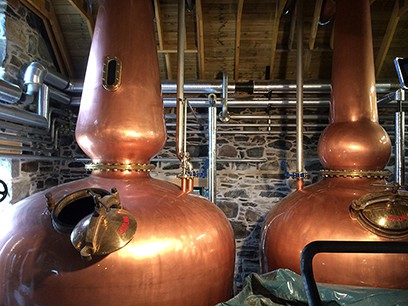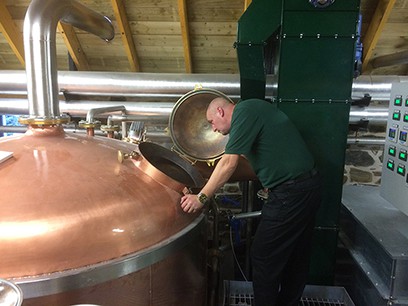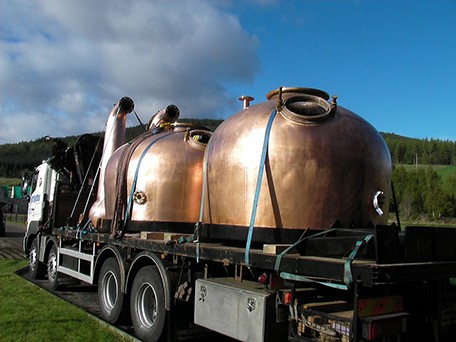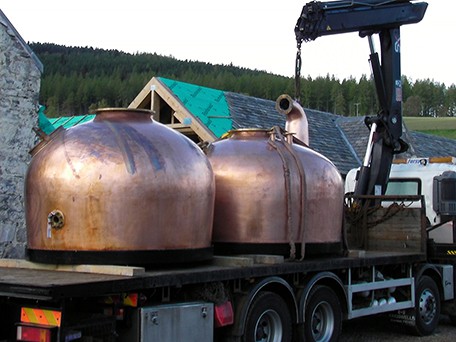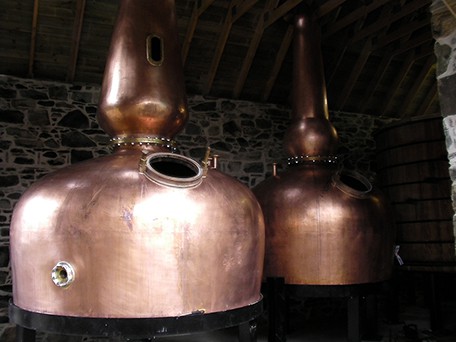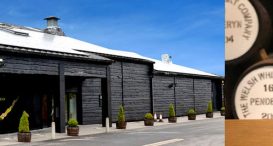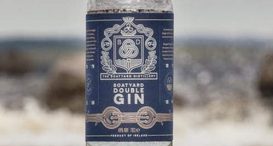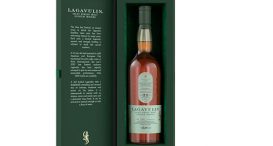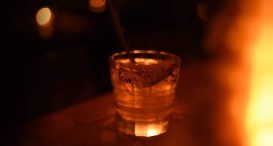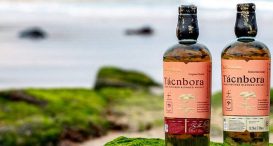Interview: Brian Robinson Distillery Host Ballindalloch Distillery
let’s begin
One of the most exciting things to come out of the whisky industry in a while is the Ballindalloch Distillery, with the distillery's live being in its infancy and a lot of mystery surrounding it I spoke with Brian Robinson, distillery host to find out what is going on up there.
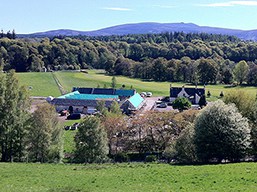
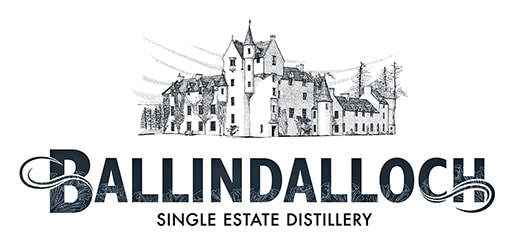
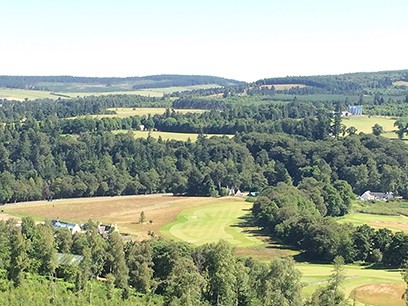
I guess it would be handy for readers to understand what your role and day to day responsibilities are at the Ballindalloch Distillery?
Brian: My principle role is to promote the distillery and host visits. That said, there are only three of us here, so there is no such phrase as “that’s not my job!” I cover for Colin when he is on holiday on the mashing and fermentation side and will be able to cover the distillation process early in 2015.
I get involved in warehousing from stencilling cask ends to filling and stowing casks as well as other bits of day to day distillery activity. I am currently working on a structure for the kind of visits we will offer as well as looking at how we might tie in other Estate assets such as the Castle or the Golf Course. I also administer our Private Cask program. Otherwise, it is the usual admin, cleaning and general duties you might expect!
You have quite an interesting history within the industry, can you give GreatDrams readers an overview of your career journey to date?
Brian: I started out in 2004 as a guide at The Glenlivet. I had been interested in whisky for more than 10 years before my wife and I moved to Scotland, and as I bought a house 500 yards from the distillery, I had landed the perfect job. I became Deputy Supervisor of the Visitor Centre there and also spent some time at Aberlour distillery. In 2006 I moved to Glenfiddich as Senior Guide and took on the Team Leader role 18 months later.
By the time I left in April 14, I was responsible for all front of house operations across the Visitor Centre. I am a whisky fan who is lucky enough to be part of the industry. Moving to Ballindalloch allows me to share my love of whisky making in a small, hand crafted distillery with some old fashioned values.
We spoke over email about the uniqueness of your distillery, what makes the Ballindalloch Distillery stand out from other distilleries?
Brian: In a word – attitude. We have restored a building from the 1820’s with a very keen attention to detail. We have a fully manual distillery allowing us the most traditional approach to distillation that we can. We have a Master Distiller in Charlie Smith with almost 40 years industry experience. We have no external influences meaning the family have complete control over what we do and how we do it. All of these things are choices that were made for the benefit of Ballindalloch Distillery and the wider Estate.
We could have done things quicker, much more easily and with less investment but it would not have fitted in with other aspects of the Estate. Our visitor offering should feel different to what established distilleries are up to. I want to extend a personal, relaxed welcome to guests and it will not feel corporate.
I am, after all, extending the welcome of the Macpherson-Grant family and the distillery should reflect that.
Can you please talk about what Single Estate means to you and what you think it will mean to consumers? How will you communicate your point of difference?
Brian: Being part of a traditional Scottish Estate that has been in the same family since 1546 means that we can adopt an old fashioned approach to whisky production. Our barley is grown on the Estate, we distil and mature on the Estate, the draff is fed to our cattle and the liquid effluent goes back to our fields as fertilizer. Everything apart from the malting process happens here.
I hope that people will see that we are making whisky with an attitude more akin to distilleries of the past who worked with the land directly around them. In terms of communicating this, it is a question of being open and honest.
I can show people the distillery, the fields, we can meet Davy the farmer and the cattle for that matter! When people visit, I can demonstrate all of these factors and how with just myself, Charlie and Colin here at the distillery we have a dedication and care to the ultimate objective which is to make the finest whisky we can.
How would you describe the Ballindalloch range you are going for? What stands it out from competitors?
Brian: To be honest, this is not a question I can answer yet as we have a long way to go before we bottle our whisky. All I will say is that we have a cask management policy that will allow us plenty of options when the time is right.
I assume you will be following the well trodden path of releasing other spirits whilst your whisky is maturing? When can we expect your first releases?
Brian: Sorry, but no! We are here to make the best whisky possible. We took a very conscious decision not to make Gin or Vodka nor will we release a new make bottling. Our intention has always been to wait around 8 to 10 years before we bottle our whisky, so it will be in the early to mid 2020’s before Ballindalloch Single Malt is available.
The ‘hands on’ day at the distillery sounds amazing, and quite unique. What prompted you to put this idea together and how are you going to protect the purity of the creation process whilst non-distillery workers are involved in the process?
Brian: The idea is largely based on the fact that I would want to do it! I have had this in mind since the very beginning as, to the best of my knowledge, no-one offers a day like this. Called “The Art of Whisky Making” this is a full day working at the distillery with Charlie and Colin. The size and manual nature of our distillery means that you have to be hands on and it is 8 hours of fairly hard work!
Guests will get a full understanding of the process as they will be involved in everything from mashing to warehousing. As quality is our main concern, only two people can take part on any day.
You work with Charlie and Colin under their close supervision as we would never want to compromise either our whisky or our guests. I promise, even the keenest whisky buff will learn something new. No tour, no tutored tasting, just a day making whisky!
How important is packaging in consumers’ decision making? Have you created the end brand look and feel as yet? Any sneak previews?
Brian: The packaging we will use will be hugely important. Many consumers will make a judgement on the quality of a product based on the look and feel of the brand.To that end, you can expect something special from us, but at the moment, it is not where we are focussing our energy.
Nothing to share from behind the scenes just yet I’m afraid!
What are the biggest challenges you’re facing at the minute in getting your message out?
Brian: Given our size, we do not have the marketing clout of the larger, established drinks companies. So, my primary outlet for telling folk what we are up to is Facebook and our website is currently under development. Word of mouth is spreading and we have had coverage in local and national press too.
Talking to whisky bloggers helps!
Finally, aside from your own, what would be your top three whiskies? Does it differ by occasion?
Brian: Ha ha- who’s buying!?! I have been so fortunate with the whiskies I have been able to taste over the last 10 years. Being on the nosing panel while I worked at William Grant and Sons, I have seen and tasted everything from trial maturations to 50+ year old expressions – a real privilege.
Keeping it sensible though, The Balvenie Doublewood 12 Year Old will always feature. It is the whisky that got me interested in single malts over 20 years ago.
I think Longmorn is often underrated and I had a terrific 1971 33 year old G & M bottling that I wouldn’t mind meeting again. Lastly, if you forced me to keep it to three, I would put Highland Park 18 on the shelf – a wonderful fireside dram.
BUT, all that said, the best whisky in the world is the one that suits the occasion and the friends you are sharing it with.
